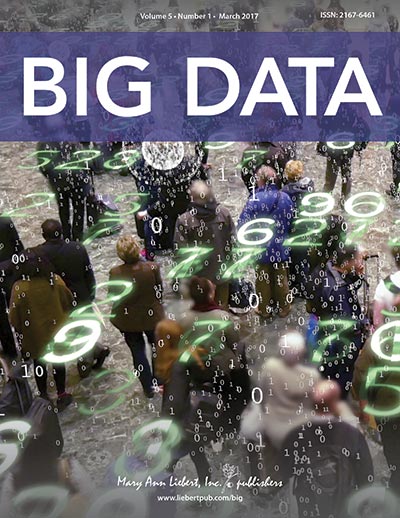For Immediate Release
New Model for Better Predicting Presidential Election Outcomes Based on Single-Show Television Viewership
Contact: Kathryn Ryan
914-740-2250
kryan@liebertpub.com

New Rochelle, May 1, 2017—A comparative study on predicting presidential election outcomes using models built on watch data for thousands of television shows has found that simple "single-show models" can have high predictive accuracy. Given the recent performance of poll-data-driven models in predicting the 2016 U.S. presidential election and the Brexit vote outcomes, models based on television viewership offer an accurate predictive tool, as reported in Big Data, a peer-reviewed journal from Mary Ann Liebert, Inc., publishers. The article is available free on the Big Data website until May 22, 2017.
In the article entitled "Predicting Presidential Election Outcomes from What People Watch?" coauthors
Arash Barfar, PhD, University of Nevada, Reno, and Balaji Padmanabhan, PhD, University of South Florida, Tampa, explore the use of predictive models built on Nielsen national watch data for both partisan and non-partisan television shows. They analyzed the model using data from the 2012 presidential election and then applied it to viewership information gathered during the 2016 presidential primaries. The researchers discuss the practical implications of their findings for campaigns and the media, and how political parties might be able to use this model to target certain shows with specific messaging.
“Bias in polling data can be difficult to detect in cases of highly infrequent outcomes such as a presidential elections,” says Big Data Editor-in-Chief Vasant Dhar, Professor at the Stern School of Business and the Center for Data Science at New York University. “We learned this lesson in the recent U.S. election, in which models based on such data were uniformly wrong. On the other hand, if what people watch is based on some latent tendencies that correlate with other economic, political, and social issues germane to an election, such data can be predictive of who you are likely to vote for.”
About the Journal
Big Data, published quarterly online with open access options and in print, facilitates and supports the efforts of researchers, analysts, statisticians, business leaders, and policymakers to improve operations, profitability, and communications within their organizations. Spanning a broad array of disciplines focusing on novel big data technologies, policies, and innovations, the Journal brings together the community to address the challenges and discover new breakthroughs and trends living within this information. Complete tables of content and a sample issue may be viewed on the Big Data website.
About the Publisher
Mary Ann Liebert, Inc., publishers is a privately held, fully integrated media company known
for establishing authoritative medical and biomedical peer-reviewed journals, including OMICS: A Journal of Integrative Biology, Journal of Computational Biology, New Space, and 3D Printing and Additive Manufacturing. Its biotechnology trade magazine, GEN (Genetic Engineering & Biotechnology News), was the first in its field and is today the industry’s most widely read publication worldwide. A complete list of the firm’s more than 80 journals, newsmagazines, and books is available on the Mary Ann Liebert, Inc., publishers website.